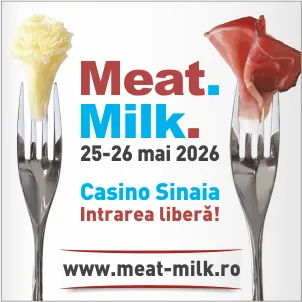
(Author: Ioan Serbanescu) A part of pig breeders started to prefer liquid feeding for their pigs. The correct homogenization and consistent hygiene eliminates any danger and the real advantages of farmers are visible, especially by using the new complete automated and computerized equipment. Unreasonable go away attitude from a profitable system The feeding process with liquid food has been used for many years worldwide in swine livestock. There is up to the farmer to apply the desired method depending on herd size, but the properties of individual farms has not led most local farmers to apply this method. In fact, many of them consider the liquid food an advantage especially for the milk production of sows (?), ignoring reducing losses, increasing consumption of food or using cheap feed components. For nearly four decades, however, are known and used liquid swine feeding facilities, especially in the fattening pigs, the option being motivated by a better exploitation of feed in the digestive system of animals. At this it contributes high water consumption; in fact one of the components of liquid feed pulp (three liters of water per kilogram of solid feed). However, pigs feeding with liquid feed require ensuring sufficient water. This is why it is recommended to install waters, one at number of maximum eight animals, installations with an average flow of one liter / minute of water and temperatures of around 18 degrees Celsius. The waters are placed at different heights to facilitate the access, regardless of the height. The distribution equipments of liquid feed are different, their structure being closely related to the age and the number of animals. The offer for the liquid feeding installations comes from the foreign companies. At present, we can only speak of fully automated equipment, monitoring at all stages being computerized. The relevant characteristics of these feeding systems are the power, attention to detail, long life, resistance to acids and easy maintenance. It is known, however, that at the local level, many of the old farms still use plants for feeding with liquid feed, technically outdated equipment that produce serious losses, mainly due to poor hygiene. Large farms require special technology because, from a certain volume of liquid feed stock, an individual feeding system cannot saturate all animals, for reasons of time. It aims to save time, while performing several tasks simultaneously. This involves the use of computer resources, required to perform in the same time various programs and activities: feed preparation, portioning simultaneously with the modification farm data space, the transmission of data to the PC or to a portable device, simultaneous control of multiple scales, feeding from separate container etc. Technological practical advantages for professionals Manufacturers of equipment for preparing- distributing liquid feed are increasingly concerned for the speed of the circuit feeding stages (eliminating the loss of time when preparation in small containers), feed mixing and compaction of feed paste in a large container for accurate weighing of feed compounds, a feeding in several stages and environmental protection. Also, correct dosage of feed, which provides reliable results, is based on homogeneous groups of animals, a feeding place for each animal and simultaneous feeding. Dosage amount of liquid feed in the last phase of fattening prevents uneven fattening of animals in order to reach the maximum quality before slaughter. Pig Feeders for liquid feeding are characterized by increasing the amount of feed consumed by animals and reducing losses during feeding. Equipped with a hopper with the volume of 90 liters, this type of feeders can store a large amount of liquid feed. Competition between animals in the compartments is limited, being thus ensured uniform growth. The filling level of feeders can be simply determined due to transparent storage bunker, fact which significantly facilitates the work of operators. With the help of level limiter, the quantity may be adjusted in the feeder for 25 different growth stages. For the group management are recommended WEDA type feeding stations. Each animal is identified by the control computer using a transceiver device installed in the ear, which adjusts demand for food obtained from each animal. The amount of food depends, on a regular basis, by the class and gestation period, being automatically adjusted according to weight. As a matter of fact, the quantity of feed for sows is dosed in the feeder. When the feeder is empty, the system components turn off to protect the technology. The control of this type of feeding station is not used exclusively as a computer for feeding, having a role in the herd management too. Through the computer sows the unit operator has a comprehensive tool, equipped with an intelligent control technology, adapted to the individual requirements of the animal. The system is fault-tolerant, simple to operate and particularly well equipped to manage large groups. Visual presentation of the unit is significantly improved, showing to the user the status of feeding, food preparation and movement of livestock. Status lights are attached to the feeding station, so they can be easily recognized in any position inside the farm hall. Thus, the main advantages are notably: - Status lights visible from all points of feeding station; - Visualization of the whole process units; - Possibility of direct control of over 25 feeding stations through a computer; - Simple and effective management of large herds of animals.




